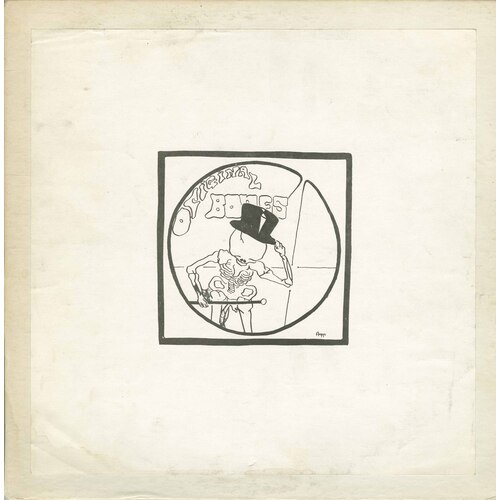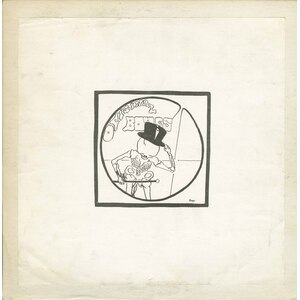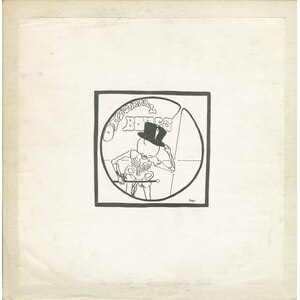Original Bones
Websites:
http://www.normhacking.com
Origin:
Scarborough, Ontario, 🇨🇦
Biography:
In early 1972, a group of musicians gathered in the makeshift studios of Scarborough College, Toronto, to record what would become one of Canada’s rarest and most intimate folk albums. Original Bones was a spontaneous, collective effort, its sessions drifting in and out over the course of several months. At the center of it all was a young Norm Hacking, whose four original songs on the album marked his first appearance on vinyl. Though the record barely surfaced beyond the immediate circle of friends and collaborators who made it, its quiet magic has endured—preserved in whispers, collector lore, and the occasional resurfacing copy with a price tag to match its scarcity.
Only about 50 copies of Original Bones were ever pressed. Each was packaged in a hand-pasted cover with an illustration of a skeleton bowing—drawn by Don Agro—echoing the spirit of a project that felt more like a creative gathering than a formal album. Those who dropped by the sessions were students, local musicians, and friends of friends, contributing vocals, guitars, harmonicas, and heart. Among them were Paul Corby, Jan Duncan, Vivian East, Greg and Martin Farrell, Gary Lipton, Janine Locke, Jackie McCormick, Jack Pickles, and others with nicknames as memorable as their performances. At its core, the record is a love letter to community, creativity, and the improvisational magic that arises when no one’s watching.
Musically, Original Bones moves through shades of folk, blues, and balladry with ease. There's an unpolished beauty in its raw, live-off-the-floor recordings—one mic, minimal overdubs, and voices blending with tape hiss and room tone. Norm Hacking’s contributions shine early: songs like “I Went Walkin’” (“Take me to the Rockies before I die...”) capture his natural lyricism and the tenderness that would define his later work. There’s something haunting about hearing that line now, knowing Norm passed away in 2007 at the age of 57. He did, in fact, make it to the Rockies.
Another standout is Janine Locke’s “Song for Pierre Laporte,” a deeply personal response to the 1970 October Crisis, when Laporte, Quebec’s Minister of Labour, was kidnapped and murdered by the FLQ. The song holds a mirror to a moment of national trauma, framed not in anger, but in quiet reflection—its power lies in how gently it’s delivered.
Cover songs round out the set—The Grateful Dead’s “Friend of the Devil,” Bob Dylan’s “One More Night”—offering familiar touchstones amidst the original material. But what gives Original Bones its soul isn’t the tracklist; it’s the feeling that these were moments captured, not constructed. You can hear the room. You can hear people listening, nodding, smiling quietly while someone plays. You can hear the care in each phrase, as if everyone knew they were doing something worth preserving, even if only for themselves.
Though Norm Hacking would go on to build a respected solo career, with albums like Cut Roses and Stubborn Ghost, Original Bones remains an essential first page. It is, in many ways, a sonic time capsule of early-70s Scarborough—when folk music was still stitched into student lounges, shared flats, and weekend recording marathons. It's both impossibly rare and deeply humble, a record never intended for fame but all the more precious for that reason. And in its dusty grooves lies a story about beginnings, about voices finding each other in the dark, and about a songwriter who, even then, knew how to speak gently and still be heard.
-Robert Williston
Vivian East: flute, bass
Jim Pett: guitar
Phil Judd: vocals, guitar
Norm Hacking: guitar, vocals
Janine Locke: vocals, guitar
Paul Corby: vocals, guitar, lead guitar
Brad Sales: guitar, vocals
Steven Sales: guitar
Gary Lipton: harp
Greg Fossell: guitar
Martin Farrell: guitar
Jackie McCormick: background vocals
Jan Duncan: vocals
Jack Pickles: guitar
Jill Weir: vocals
Leighton McLeod: guitar
Carol Sokoloff: vocals
Produced by Steve Sharpe
Engineered by Fletcher Bate and Steve Sharpe
Recorded at Scarborough College Media Centre Studios, Toronto, February–June, 1972


